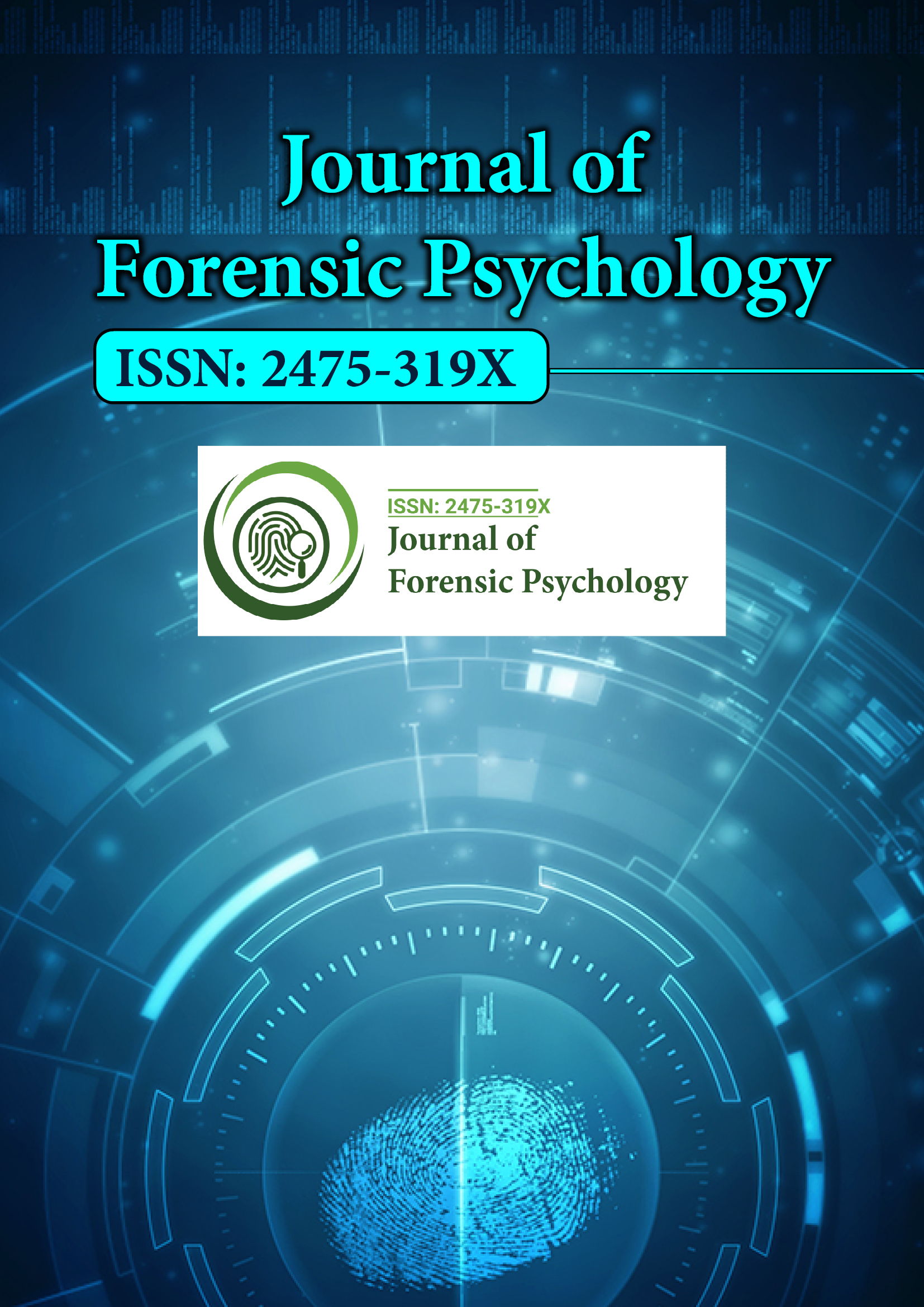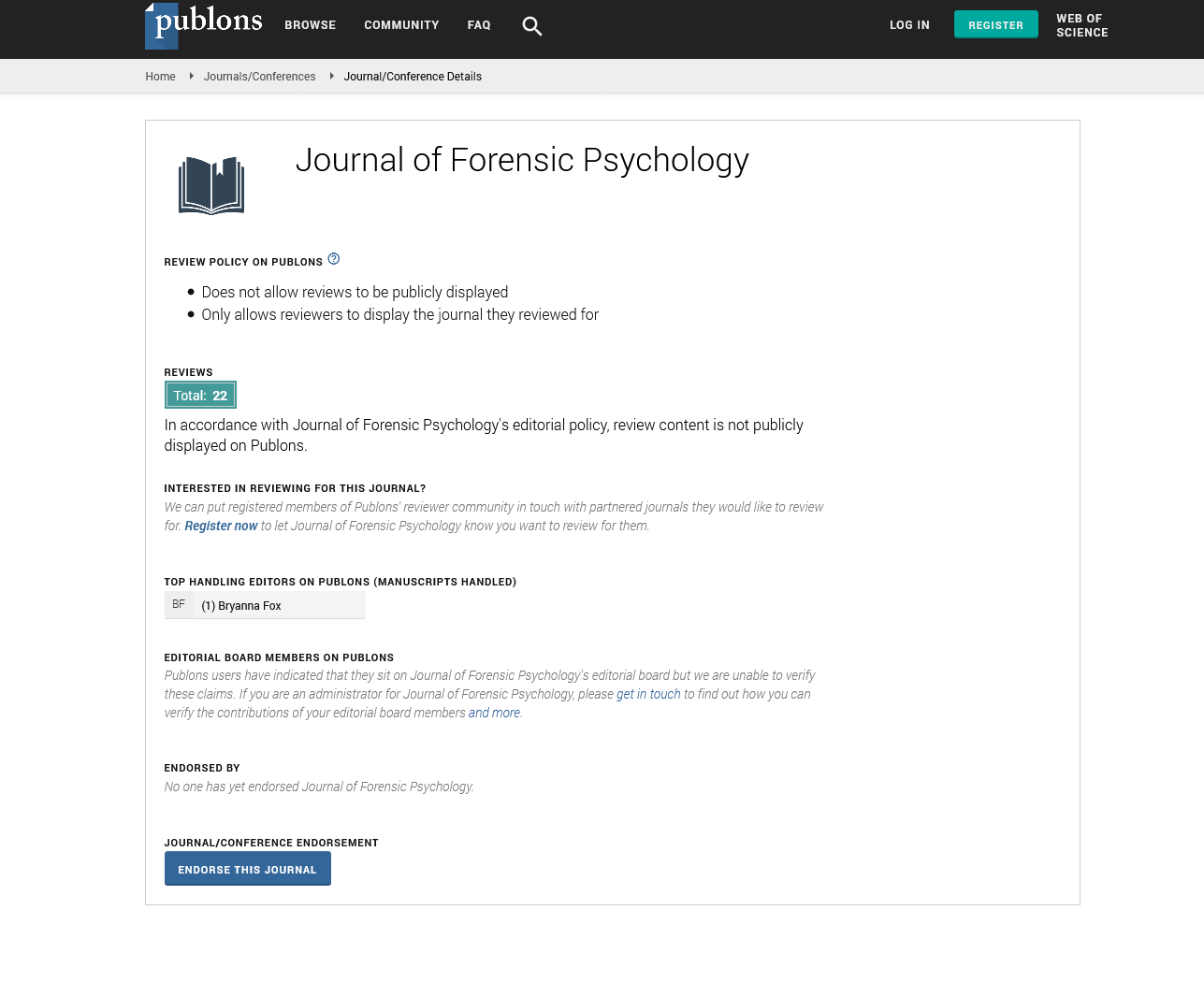Indexed In
- RefSeek
- Hamdard University
- EBSCO A-Z
- Publons
- Geneva Foundation for Medical Education and Research
- Euro Pub
- Google Scholar
Useful Links
Share This Page
Journal Flyer

Open Access Journals
- Agri and Aquaculture
- Biochemistry
- Bioinformatics & Systems Biology
- Business & Management
- Chemistry
- Clinical Sciences
- Engineering
- Food & Nutrition
- General Science
- Genetics & Molecular Biology
- Immunology & Microbiology
- Medical Sciences
- Neuroscience & Psychology
- Nursing & Health Care
- Pharmaceutical Sciences
Commentary - (2022) Volume 7, Issue 12
Trend and Characteristics of Autism Spectrum Disorder
Andrew Zimmerman*Received: 25-Nov-2022, Manuscript No. JFPY-22-19399; Editor assigned: 02-Dec-2022, Pre QC No. JFPY-22-19399 (PQ); Reviewed: 16-Dec-2022, QC No. JFPY-22-19399; Revised: 23-Dec-2022, Manuscript No. JFPY-22-19399 (R); Published: 30-Dec-2022, DOI: DOI: 10.35248/2475-319X.22.7.258
Description
Early onset of Autism Spectrum Disorder (ASD) is associated with qualitative problems in social interactions, noticeably impaired communication abilities, and limitations on repeated behaviours, interests, and activities. Currently, a set of conditions with deficiencies in social interaction, communication, and RRBs are together referred to as ASD. Numerous conditions fall into one of two categories when it comes to ASD: (1) genetic conditions, such as fragile X syndrome, Rett syndrome, and tuberous sclerosis, and (2) idiopathic conditions with unknown aetiology [1].
Over the years, idiopathic types of ASD have gone by a number of names, including Asperger syndrome, pervasive developmental disorder, and autistic disorder. The articles for each ailment have more details about the subtypes. The fact that ASD has also been referred to as "autism" and "autistic disorder" can be helpful to readers. Disorders like ASD and illnesses with certain characteristics of autism have been referred to as "Pervasive Developmental Disorders" (PDD). High-functioning persons with ASD are those who have normal or exceptional intellectual abilities, and this condition is known as Asperger syndrome. It's possible that people with Asperger syndrome don't have the communication issues ASDs are known for. People who have the genetic conditions linked to ASD may or may not show the symptoms and indications of the disorder. Opportunities for the successful lives of persons with ASD and their families are provided through the development of approaches to assist people with ASD obtain good educational and occupational outcomes in community settings [2-7].
The following behavioural and developmental traits suggestive of autism include:
• Developmental backwardness
• Lack of protodeclarative pointing, or failing to glance in the same direction as the examiner while pointing
• Unexpected responses to environmental stimuli
• Abnormal interactions with others
• Not grinning when parents or other familiar faces welcome People
• Absence of common reactions to physical pain and injury
• Delays and variations in the language
• There is no symbolic play.
• Stereotyped and repetitive behavior
It is essential to regularly screen infants and toddlers for ASD symptoms and indications since doing so enables early patient referral for additional assessment and care. Siblings of children with ASD run the chance of acquiring ASD symptoms, including a full-blown diagnosis. Siblings should thus also be screened, not just for symptoms of autism but also for social issues, language delays, learning difficulties, and signs of anxiety or depression.
Diagnosis
The following findings during an examination for persons with suspected ASD include:
• Abnormal motor behaviour (eg, clumsiness, awkward walk, hand flapping, tics)
• Abnormalities in dermatology (eg, aberrant palmar creases)
• Abnormally large head size (eg, small at birth, increased from age 6 months to 2 years, normal in adolescence)
• Stereotypes relating to the head, trunk, and extremities (eg, purposeless, repetitive, patterned motions, postures, and sounds)
• Self-destructive habits (such as skin plucking, self-biting, and head punching/slapping)
• Other people's infliction of physical harm (eg, parents, teachers)
• Sexual assault
• External examination of the genitalia is appropriate; a pelvic and rectal examination may be necessary if there are any bruises or other signs of trauma.
The Diagnostic and Statistical Manual of Mental Disorders, Fifth Edition (DSM-5) includes autism disorder (also known as autism), Asperger's disorder, childhood disintegrative disorder (also known as Heller's syndrome), and pervasive developmental disorder not otherwise specified in its definition of ASD. These characteristics of ASD include:
• A lack of social connection and communication
• Restrictive patterns of behaviour, interests, and pursuits (RRBs)
These symptoms, which limit or hinder daily functioning, start showing up in early childhood. The diagnosis of ASD requires both elements.
Blood tests are not advised for the routine evaluation of ASD. A metabolic workup should be taken into account on an individual basis even if various metabolic abnormalities have been found in examinations of patients with ASD (e.g., higher serotonin, reduced serum biotinidase, aberrant neurotransmitter functions, and impaired phenolic amines metabolism). Autism has no biological markers at the moment.
The following studies are some that may be helpful in the assessment of ASD:
• To exclude out seizure disorders, acquired aphasia with convulsive disorder (Landau-Kleffner syndrome), biotinresponsive infantile encephalopathy, and associated ailments, an EEG was performed on a sleep-deprived person.
• Psychophysiological evaluation: To demonstrate a lack of habituation to repeatedly given stimuli (in the breathing period, electro dermal activity, and vasoconstrictive peripheral pulse amplitude response); auditory over selectivity may be observed.
• Polysomnography: To detect sleep abnormalities and show discharges from seizures.
References
- Lehmann P. Posttraumatic stress disorder (PTSD) and child witnesses to mother-assault: A summary and review. Children and Youth Services Review. 2000; 22(3-4):275-306.
- Department of Health and Ageing. Mental health national outcomes and casemix collection: Overview of clinician‐rated and consumer self‐report measures, version 1.50.
- Rossman BB. Longer term effects of children's exposure to domestic violence.
- Stanley N. Children experiencing domestic violence: A research review. Dartington: Research in practice; 2011.
- Wolfe DA, Crooks CV, Lee V, McIntyre-Smith A, Jaffe PG. The effects of children's exposure to domestic violence: A meta-analysis and critique. Clin Child Fam Psychol Rev. 2003;6(3):171-187.
- Goddard C, Bedi G. Intimate partner violence and child abuse: A child‐centred perspective. Child Abuse Review: Journal of the British Association for the Study and Prevention of Child Abuse and Neglect. 2010; 19(1):5-20.
- McIntosh J. Children living with domestic violence: Research foundations for early intervention. Journal of Family Studies. 2003;9(2):219-234.
Citation: Zimmerman A (2022) Trend and Characteristics of Autism Spectrum Disorder. J Foren Psy. 7:258.
Copyright: © 2022 Zimmerman A. This is an open-access article distributed under the terms of the Creative Commons Attribution License, which permits unrestricted use, distribution, and reproduction in any medium, provided the original author and source are credited.

